Portrait of Marie-Charlotte Georgette Nizon de Saint-Georges.
1807-1809.
Oil on canvas.
H. 27 ; L. 21 cm.
This portrait of a lady with a fresh complexion represents, as indicated by the inscription on the canvas, Madame Marie-Charlotte Georgette Nizon de Saint-Georges. She is dressed in a white gown, the transparency of which is finely rendered by delicate layers of glaze. Her coral jewelry, notably her imposing cross-shaped necklace and comb, allow us to date the painting fairly accurately to the years 1807-1809. The detail of the satin ribbon winding around the lady's hat and fingers is treated like a miniature, with great precision.
It has been possible to trace the life of this mysterious artist, of whom nothing was known except the name under which she signed her paintings and appeared regularly at the Salon from 1804 to 1835. Indeed, only her first participation in 1804 is under the name "Jenny Levaché-Desoras", then she presents herself as "Jenny Desoras" or "Jenny Berger", using her husband's name. Thanks to the discovery of a judgment rendered in 1827, we have been able to establish with certainty that Jenny Levaché, Jenny Desoras, and Jenny Berger were the same person[1].
The daughter of a hatmaker[2], Jeanne Levaché grew up with her younger sister in Lay, in the Loire region, until her adolescence. Nothing then predisposes the young girl to painting, especially since she became an orphan around the same time. Her father suddenly disappeared in 1791[3], leaving no trace, followed by her mother who died in 1794.
Thanks to the networking of her godfather, Marshal Joseph George[4], Jenny Levaché seems to have been entrusted to the care of a notable family in the region, the lords of Soras[5]. Certainly demonstrating marked drawing skills, they likely encouraged her to continue her apprenticeship and hope for an artistic career.
The young artist took her first lessons with a certain "Sermaize". In any case, it seems that this was Simon Jean Malard de Sermaize, a lawyer from the neighboring Saône-et-Loire region and an amateur artist.
Upon reaching adulthood in 1800, Jenny Levaché moved to Paris and joined the famous female studio of Jean-Baptiste Regnault. After a few years of perfecting her art, she participated in her first Salon in 1804. In the catalog[6], she became known under the pseudonym of Désoras-Levaché, a borrowed name that resonates as a tribute and a mark of recognition to her protectors from her youth. She only exhibited under this pseudonym thereafter, adding her husband's name from 1813 onwards, and mentioning "widow Berger" after her husband's death in 1826.
The artist enjoyed some success with her humorous genre subjects on the theme of love and marriage, reproduced in engravings "Connoisseurs of the graceful genre will hasten to obtain two charming engravings, entitled: Two Days of Marriage and Two Years of Marriage, after the lovely paintings by Mrs. Berger, nee Jenny Desoras, exhibited at the Salon of 1819."[7].
We also know that she worked on numerous portraits. Some are known, and they show a great similarity in execution to ours. Indeed, she depicted faces with large outlined eyelids, very defined features, a very fresh complexion, a landscape painted in broad strokes in the background, contrasting with the precision of the depicted fabrics. The portrait of Madame Duschenois was certainly made during the same period. We find the same inclination of the face and the friendly gaze turned towards the viewer.
A medical article published in 1806[8], dealing with the study of the disease that affects her, testifies to her work. It describes her as follows: "Her cheerful character, her lively imagination; she carries to excess the love of her art, and often sacrifices to it, through prolonged studies, or in the enthusiasm of composition, the hours of rest, sleep, and exercise" and specifies that "the patient had a dominant passion for painting; she continued to sit 6 to 8 hours a day in front of her models, her brushes in hand". It is rare and touching to have access to such a testimony about the life of an artist.
Illustrations:
Jenny Desoras, hunter and his dog, oil on canvas, 58x45 cm, 1823. Osenat, July 3, 2016, lot no 437.
Jenny Desoras, half-length portrait of Catherine Josephine Duchesnois, Paul-Marmottan Library, City of Boulogne-Billancourt, Academy of Fine Arts.
[1] Gazette des tribunaux, journal of jurisprudence and judicial debates, n°409, January 27, 1827, p. 317. The article states that "Miss Levacher Desoras is the author of several paintings (...) in 1813, Miss Desoras married Mr. Berger."
[2] Departmental Archives of the Loire, Civil Status, Lay, Baptisms, Marriages, Burials - 1773-1780, Baptismal Certificate of Jeannette Levacher.
[3] According to a notoriety act of the justice of the peace of the canton of Saint-Symphorien de Lay dated August 20, 1811 cited in the marriage certificate of September 10, 1811 of his daughter Sophie, Barthélemy Levaché has been absent from Lay for about 20 years and there has been no news of him since.
Departmental Archives of Allier, Civil Status, 2 Mi EC 142 7, LE DONJON, Marriages and Deaths, 1801-1822, year X-1822, Marriage Certificate of Hubert Morgat - Sophie Levaché of September 10, 181.
[4] Departmental Archives of the Loire, Civil Status, Lay, Baptisms, Marriages, Burials - 1773-1780, Baptismal Certificate of Jeannette Levacher.
[5] Barthélémy Veyre de Soras being a cavalry captain and former gendarme of the King's Guard.
[6] Explanation of paintings and drawings, sculpture, architecture and engraving works by living artists... printing house of Sciences and Arts, Paris, cat. 308.
[7] Le Corsaire: journal of shows, literature, arts, morals, and fashion, n°22, August 1, 1823, p. 4.
[8] General journal of medicine, surgery, pharmacy, etc. or periodic collection of the Society of Medicine of Paris, Society of Health of Paris, 1811, pp. 3-14.








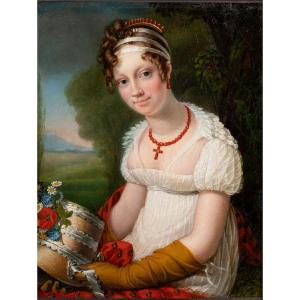











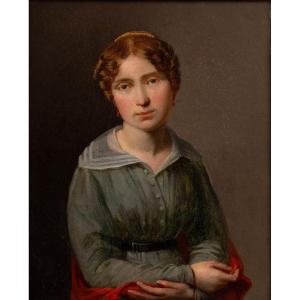
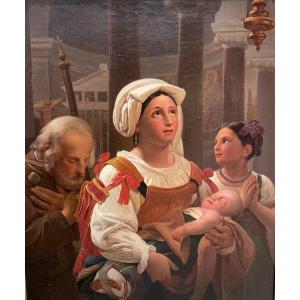
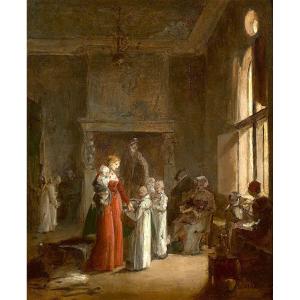








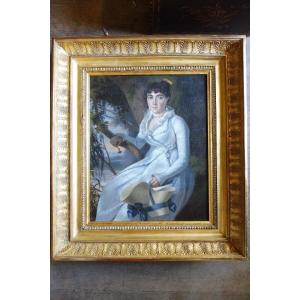
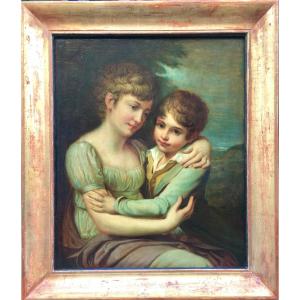

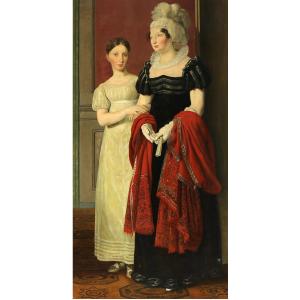



 Le Magazine de PROANTIC
Le Magazine de PROANTIC TRÉSORS Magazine
TRÉSORS Magazine Rivista Artiquariato
Rivista Artiquariato